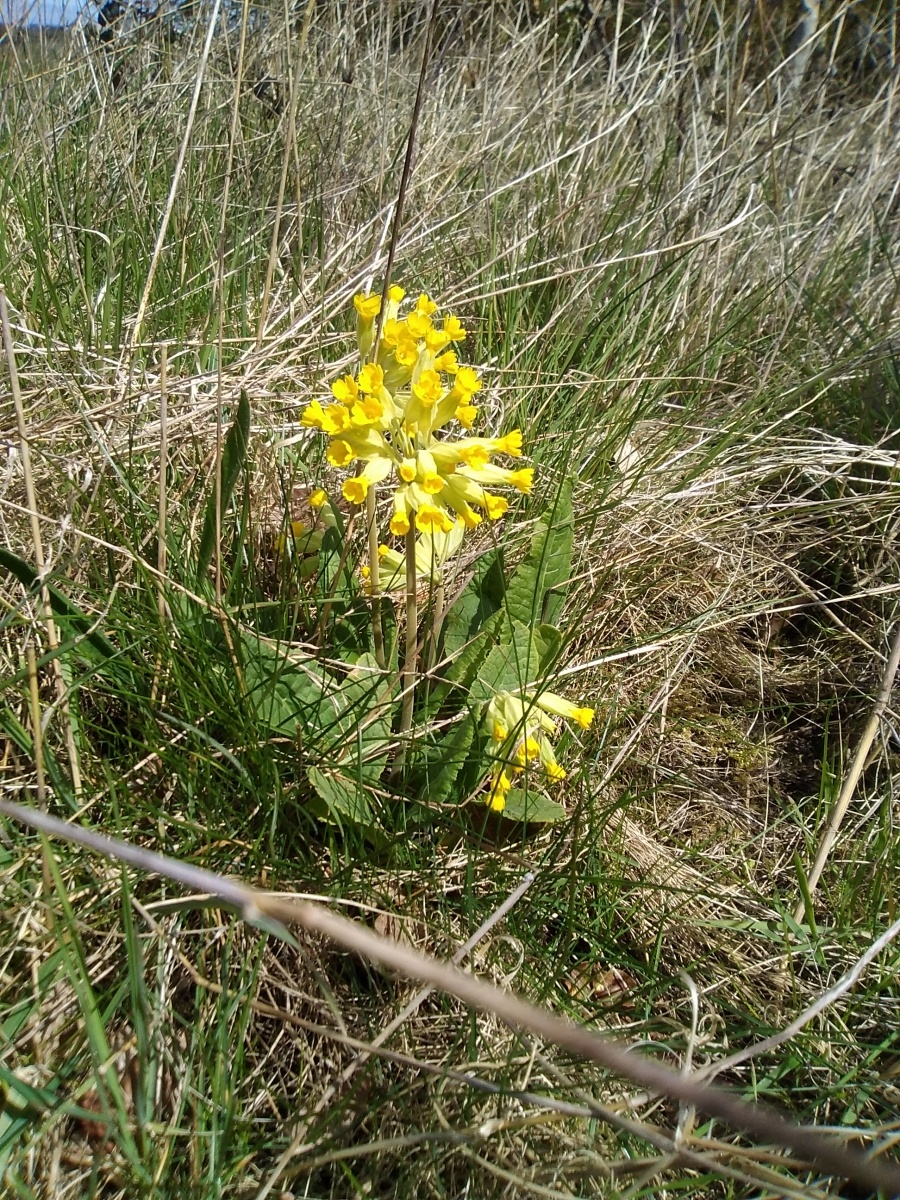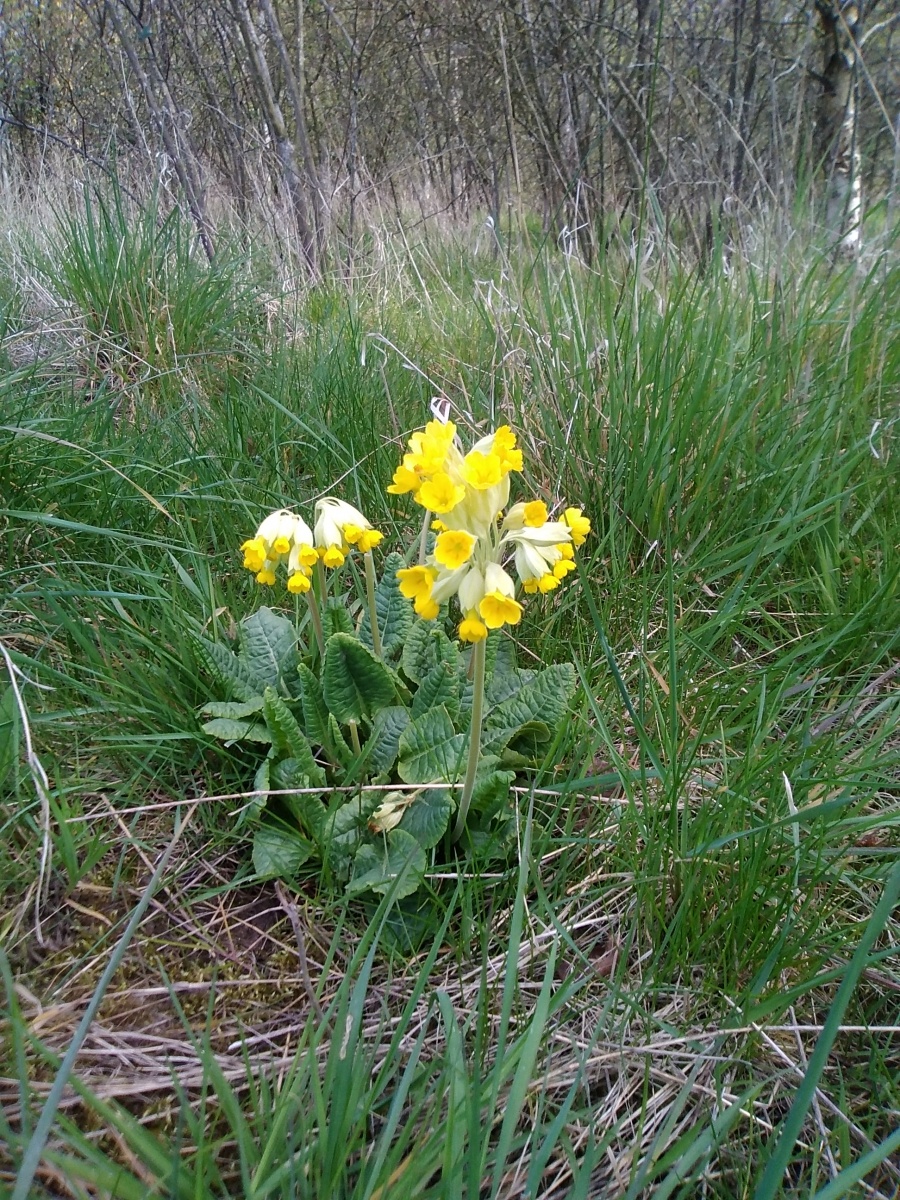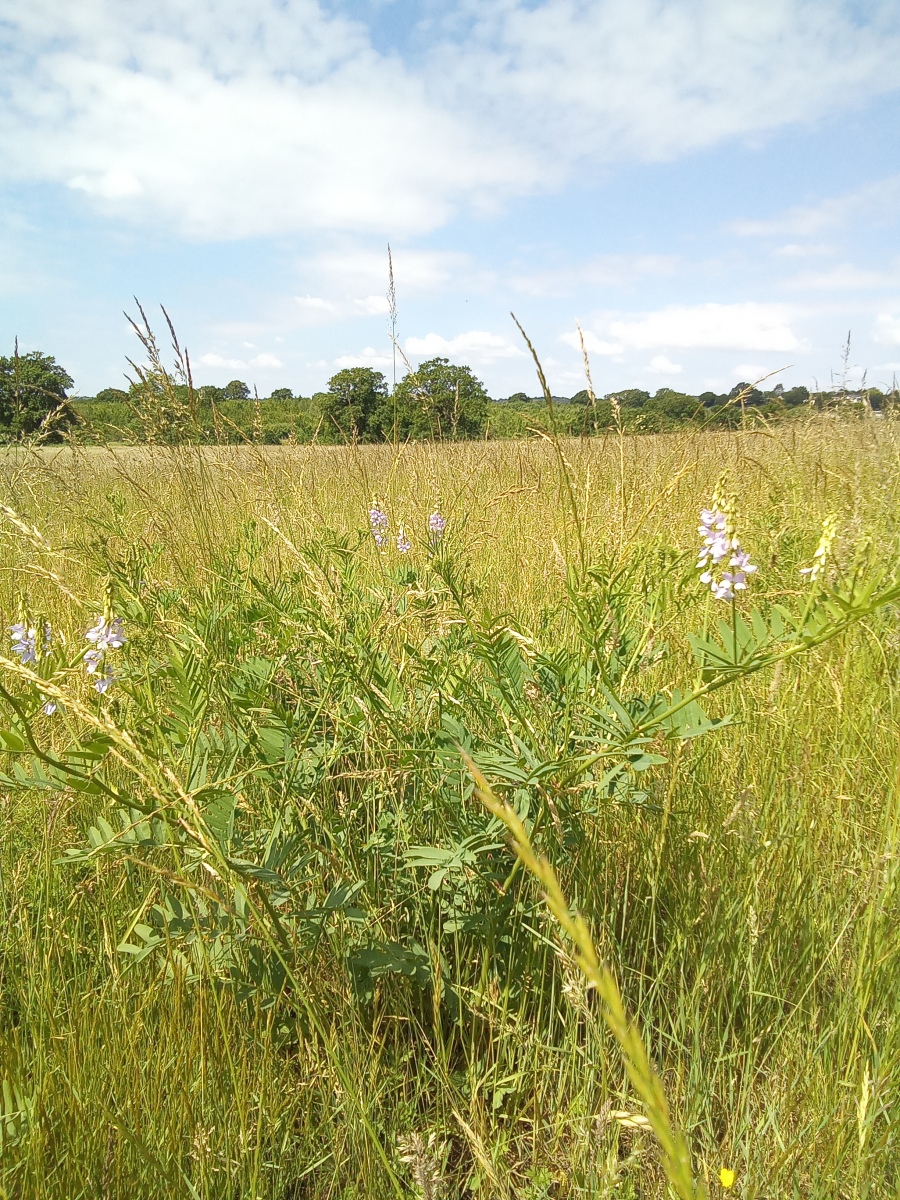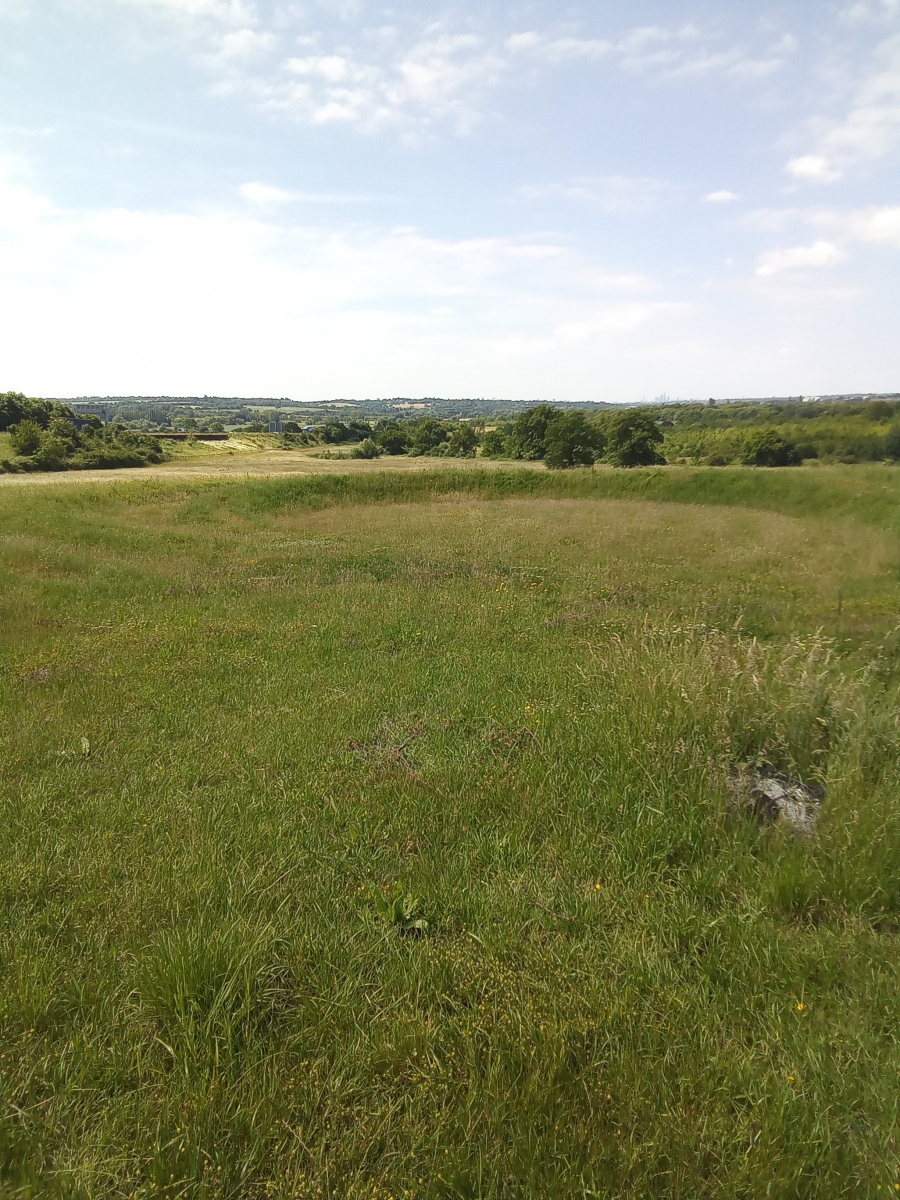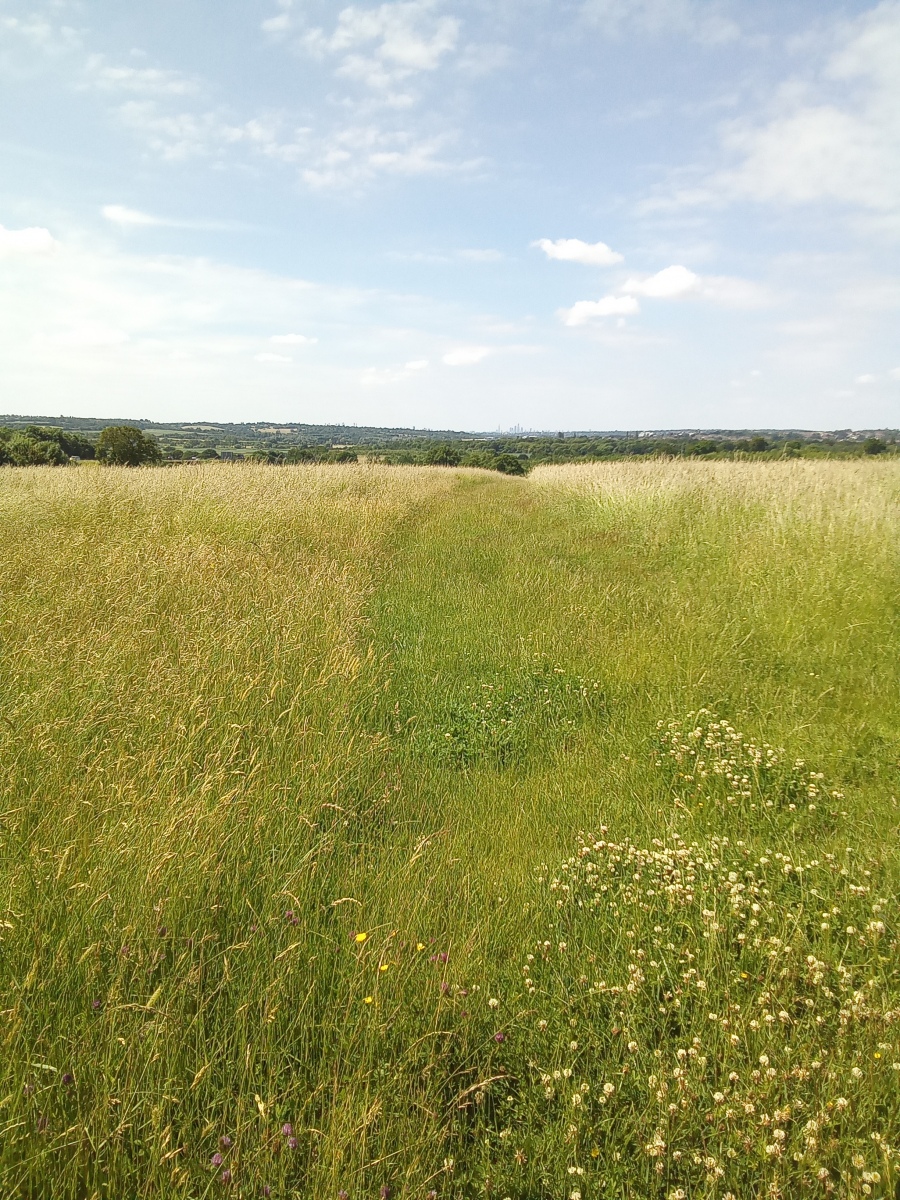Theydon Bois Wood And The Debden Estate
The area known today as the newly planted Theydon Bois Wood to the East of Theydon Bois and alongside the M11 is believed to have once been part of Epping forest. As far back as the 18th century this piece of land appears on maps to be divided into separate fields and was once referred to as Mount Pleasant and The Hill. Maps dated from 1840 show a small wooded area at the top of this hill called Thrift’s Wood, today Thrift’s Hall Farm borders the site to the north west. Older maps from the 17th century show that it was also adjacent to Blackacre Farm. Blackacre Road exists today just across the railway. These 17th century maps show a manor house called Theydon Hall was just to the east, Theydon Hall Farm now lies directly across the M11. More recently this land is believed to have been Grade III agricultural land.
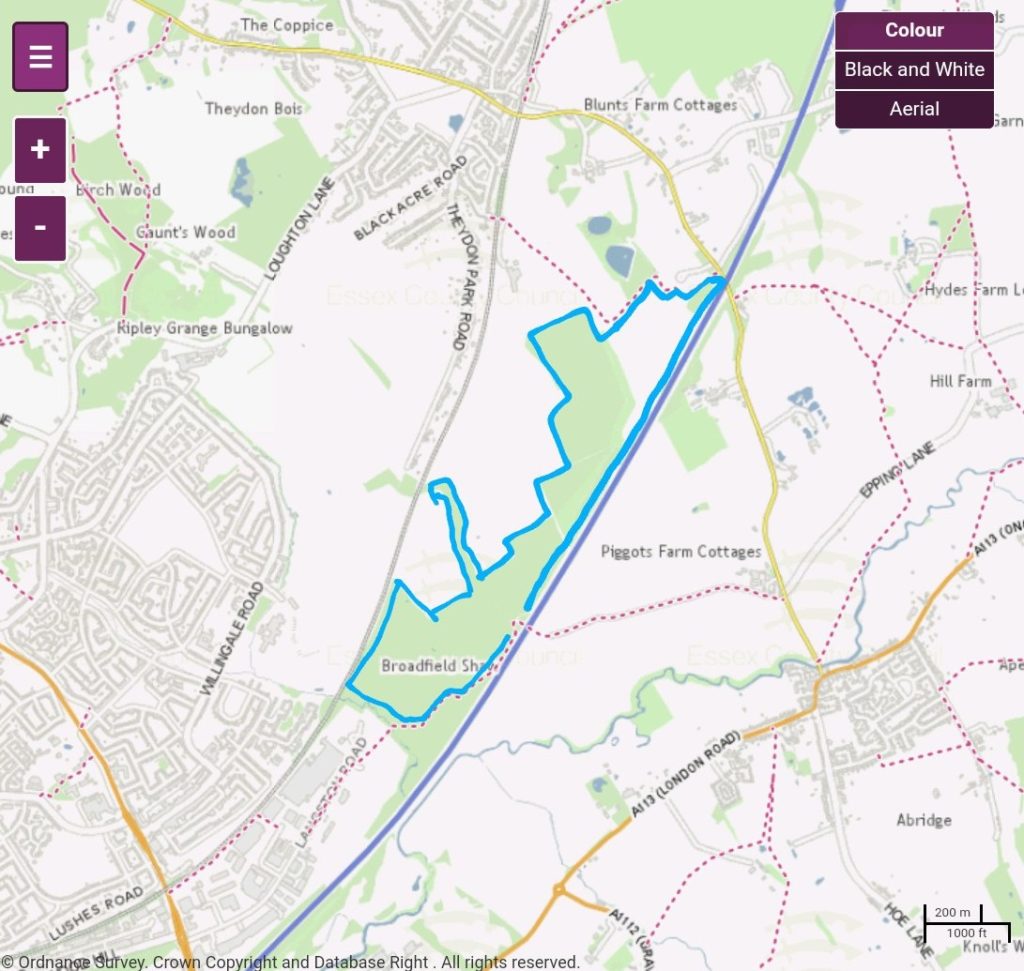
Ordnance survey map credit to Essex County Council
Around 95 acres of land here were acquired by the Woodland Trust as part of the Tree For All project. The hillside was planted between 2006 and 2009 with native broadleaved tree species with the help of local community groups. Some 30,000 trees were paid for by Essex County Council and the Fo Guang Shan Buddhist order paid for a further 4,500 trees which they planted with volunteers. At the completion of the planting, judges of the Man Booker Prize planted an avenue of Oak trees to symbolise trees which had been felled to print novels nominated for the Booker Prize. Local school children were invited to plant a further 45 trees. The eventual goal is to plant 50,000 native broadleaved trees at the Theydon Bois Wood site.
Centre stage on the top of the hill is the Theydon Bois Ground Sculpture which was commissioned by the Woodland Trust in 2013 and designed by landscape artist Richard Harris. All of the soil used to create the raised banks of the sculpture came from the site itself where ponds were de-silted and new woodlands were planted. The sculpture is visible from the M11 motorway as a series of concentric rings on the hillside. These rings symbolise the seeds of trees and they were originally intended to be planted with native trees which would be cut hard every 7 to 15 years to reveal different views across the distant landscape and views over London. The main audience of this artwork are the passing cars on the motorway, although had this been planted the banks would have been less visible and appeared as curved rows of trees at different heights. It is unclear why this stage was never completed.
Further information about the ground sculpture can be found at the following link
From the earth sculpture the ground drops slowly down onto a species rich meadow which is specifically managed as unimproved grassland. There is a small stream running through the lower ground and at the eastern end of this stream near the motorway a pond was created to provide an area of wetland habitat. To the south of the stream an orchard of apple trees were planted by local school children and a wildflower meadow was sown around them in 2007 containing Common Bent, Crested Dogstail, Sheep’s Fescue, Smooth Stalked Meadow Grass, Red Fescue, Small Leaved Timothy, Yarrow, Knapweed, Birds Foot Trefoil, Cowslip, Self Heal, Common Vetch, Red Clover, Lady’s Bedstraw, Plantain and Black Medic. Many of these species still thrive at the site in vast numbers giving a visually spectacular show in spring and summer, whilst also creating an important habitat for wildlife. Currently the meadows here are cut manually but options are being explored to introduce grazing as a management strategy. It is hoped in the longer term local people can be encouraged to volunteer in managing the orchard. Original plans also included an extension of the orchard and wildflower meadow to the north of the stream. In spring Cowslips have a dominant presence around the meadows here but in summer a patchwork of rich colour takes over with Knapweed accompanied by a lilac hue of Devil’s Bit Scabious and Goats Rue, with a colourful undercarpet of countless other mixed wildflower species.
Around 70% of the site is made up of woodland which was newly planted and is now establishing to create a wildlife corridor from the older areas of ancient woodland and ancient semi natural woodland to the south of the site on the Debden Estate. These new woodlands were planted in such a way as to preserve the views over the London skyline. As a result of opening up the site to public access two previously unlinked public rights of way are now connected, making the location accessible from both Theydon Bois along public footpath number 10 and the Debden Estate via public footpath number 24. The last newly established wooded area is situated at the south of the site against the edge of Long Shaw on the Debden Estate.
The Debden Estate covers around 7 hectares of land comprising of arable farmland and two distinct strips of woodland, the smaller of which is Long Shaw. This is a semi natural woodland which records show to be dated around the late 17th to early 18th century. Among its many native species it contains a fine specimen of Wild Service Tree and some of the Hornbeams here appear to be very old pollards. Around 300 metres to the south of Long Shaw just the other side of the railway line, a Roman Villa was discovered in 1976 when artifacts were found while excavating the site of a crashed plane. As well as Roman artifacts, Iron Age pottery and flint tools from the Mesolithic period were also recovered here. These are incredibly surprising finds considering that during its construction, the Theydon Bois Wood site just a relatively short distance away was noted to be very poor in archeological finds.
Further south along public footpath number 24 is Broadfield Shaw. This is an ancient fragment of woodland which was once part of the Great forest of Essex and forms a historic link between Epping and Hainault forests. There is evidence here that this woodland was once managed much the same as Epping forest by coppicing and pollarding the trees. Throughout the site there are numerous ancient Oak and Hornbeam pollards, as well as a significant number of ancient Hornbeam and Hazel coppice stools. A limited number of Wild Service Trees can also be found here, a reliable indicator of ancient woodland. Some seasonal ponds exist here as well as some small areas of grassland and a tributary of the river Roding known locally as both Debden brook and Pyrles brook. In winter it is not unusual for flood water to be forced back upstream under the motorway from the Roding and in to the arable fields around the edge of Broadfield Shaw creating temporary lakes of standing water visible from the motorway.
There is no visitor parking at Theydon Bois Wood and this was an intentional part of the design in order to preserve a remote and out of the way feeling. This was also done to encourage local residents and land owners to take on a key role as volunteers in the conservation and maintenance of the site and to encourage visitors to either walk or cycle to reach the location. The absence of car parking keeps the site wonderfully low key by limiting footfall. Although there are proposals to improve links and access to Theydon Bois Wood with enhanced signage and paths, unsurprisingly the parish council and local village action group oppose this and do not consider it to be an acceptable SANGS (Suitable Alternative Natural Green Space) to mitigate local developments largely due to its remoteness and lack of parking.
Access to the site is on foot from the main entrance on the B172 Abridge Road just beside Theydon Bois cemetery by the motorway bridge,
(Please note the cemetery is not to be used as a car park for access)or by walking along Green Glade and crossing the footbridge over the railway beside number 61, then following public footpath number 10 which leads to the lower slope beneath the earth sculpture. Many of the nearby roads are permit holders only so it may be easier to park further away then walk back to the village to access the site. It is also possible to enter from the south walking along public footpath number 24 from Langston Road and keep heading north through the Debden Estate until the path merges with the track leading north past Long Shaw alongside the newly planted wood and up to the meadows at the bottom of the Theydon Bois Wood site. As always, parking should be done with consideration for local residents.

